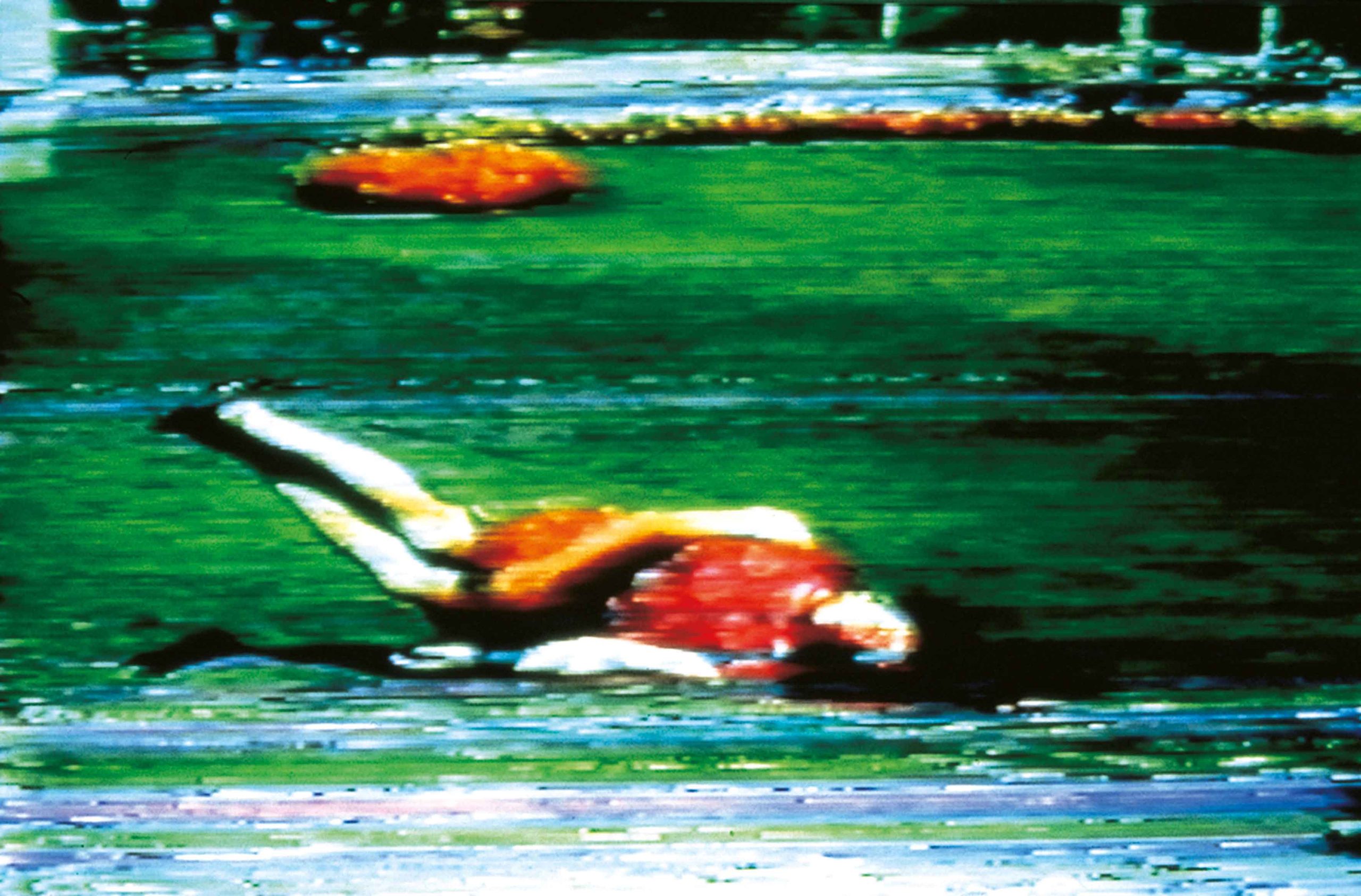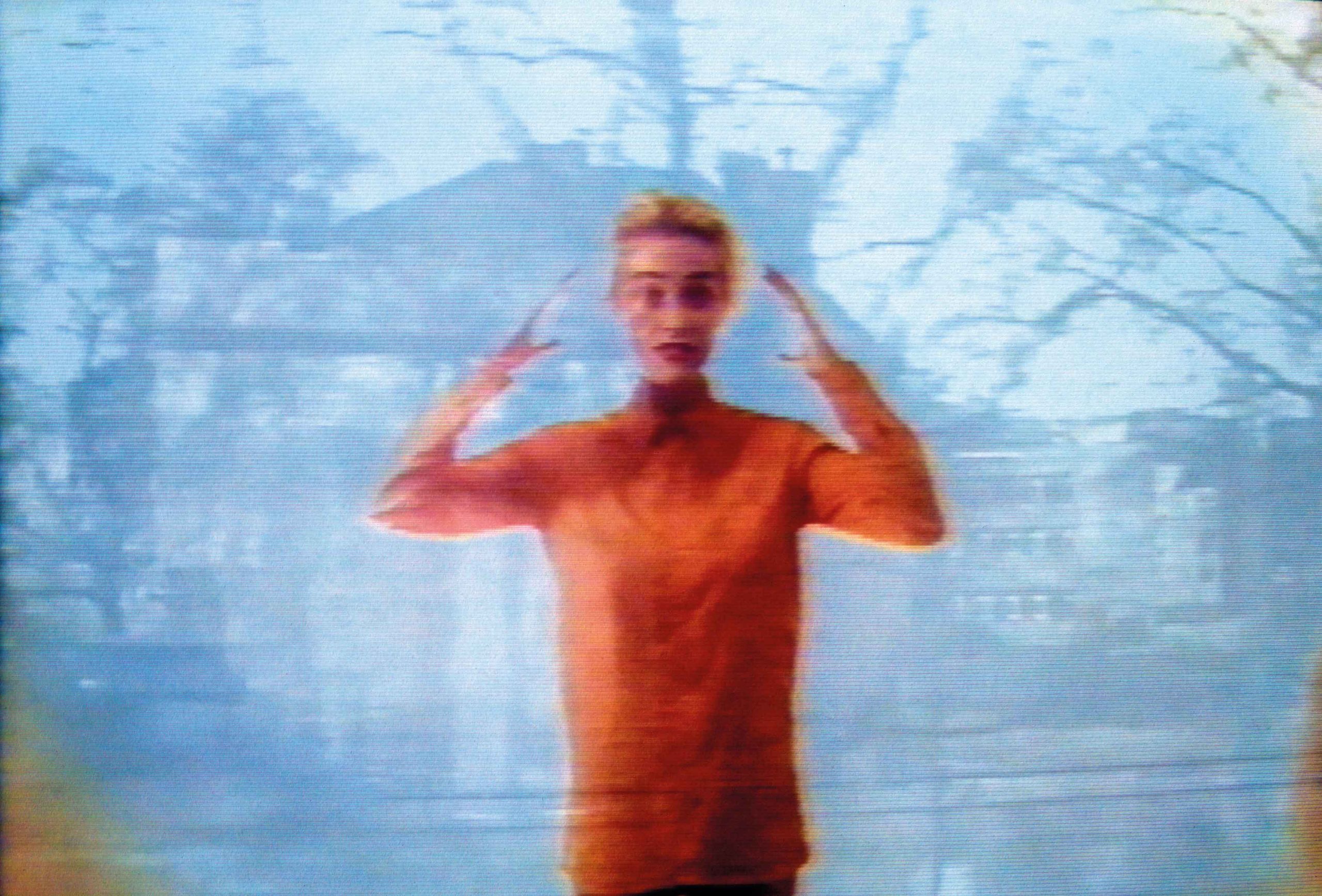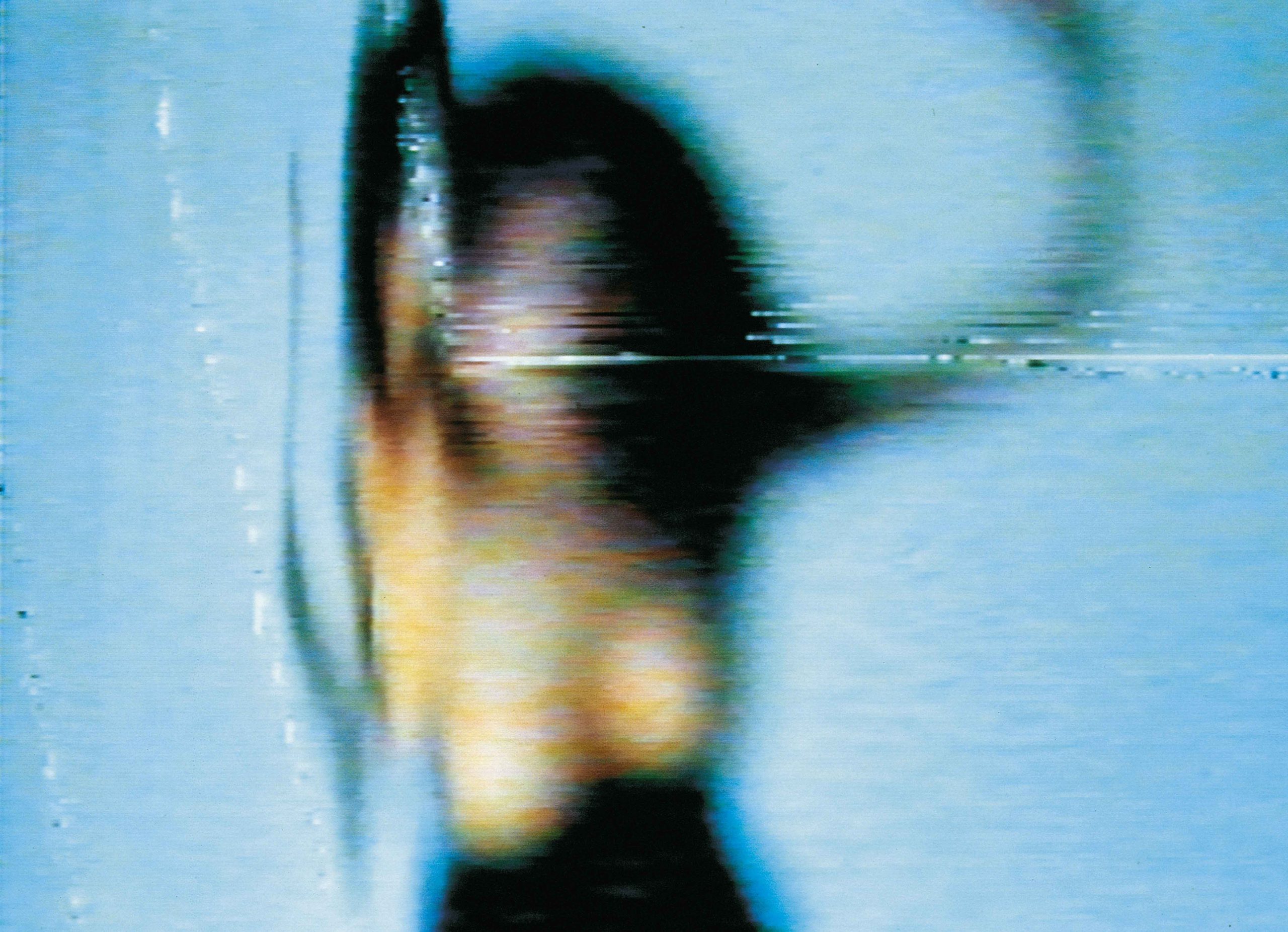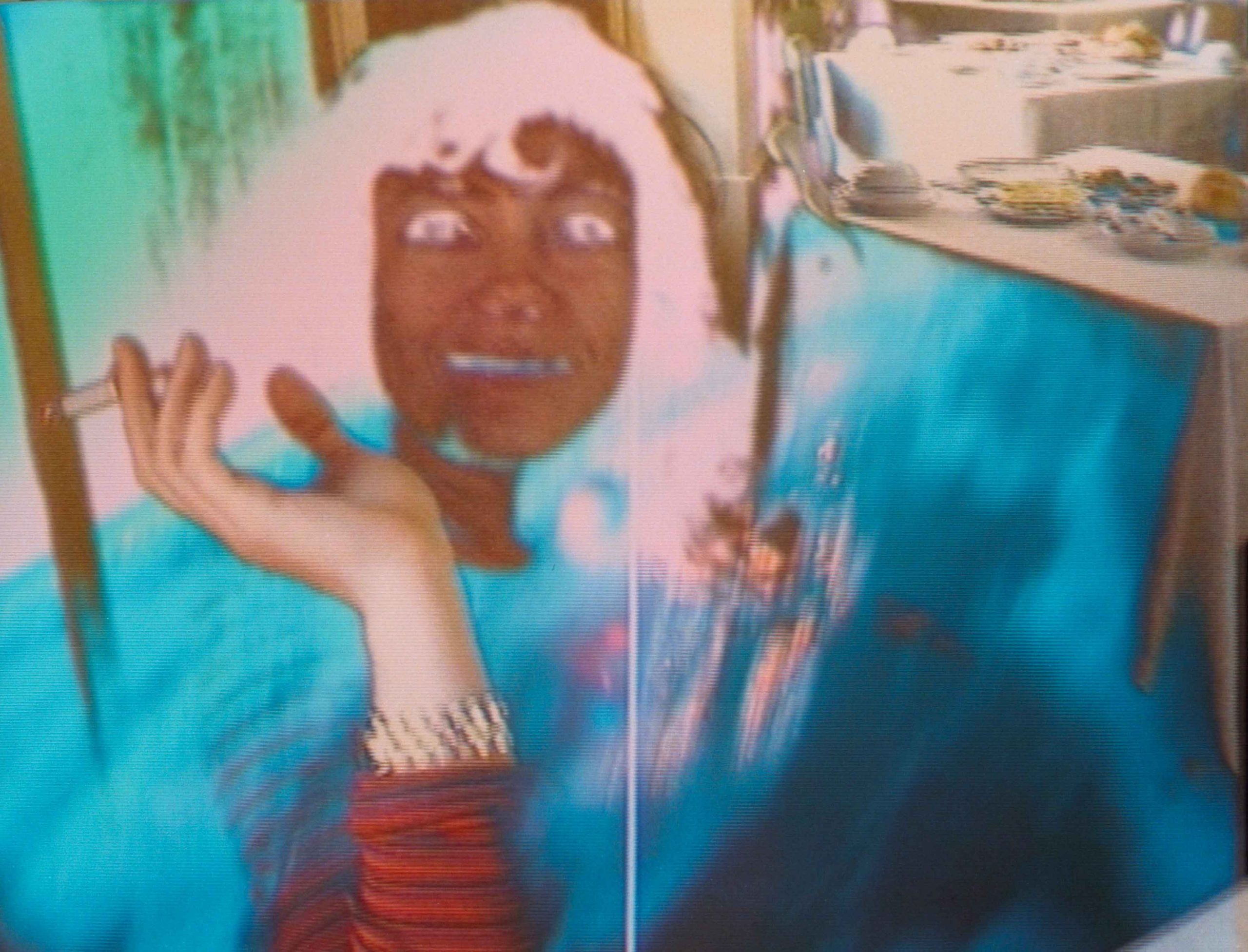Pipilotti Rist Tribute
(Entlastungen) Pipilottis Fehler / (Absolutions) Pipilotti’s Mistakes (1988) | Pipilotti Rist (CH) | 11:00 min
The video called “Absolutions, Pipilotti’s Mistakes” comes from the initial period of the artist’s career. At the time, Rist was experimenting with the technical possibilities of video and exploited its limitations and technical faults creatively, as this work shows. Accompanied by brisk drumbeats, we are shown a woman falling, slipping off a wall, and being immersed in water – but there is hardly a scene that is not distorted, fragmented, or played too quickly or too slowly. These extreme modifications of the image challenge our habitual ways of seeing things. To expose yourself to “Absolutions, Pipilotti’s Mistakes” is take up a challenge as a viewer.
You Called Me Jacky (1990) | Pipilotti Rist (CH) | 04:12 min
With You Called Me Jacky, Rist presents herself in androgynous clothes, mouthing a song by male singer Kevin Coyne. Her performance is strong, funny, awkward, and passionate — in short, too complex to easily categorize what “type” of woman she is. The music video style of You Called Me Jacky characterizes Rist’s work. An artist who came to the fine art world through the portal of pop culture, Rist has designed concert stages, directed videos for local bands, and played in a band herself. She has utilized songs in other videos as well.
In You Called Me Jacky, Rist creates an emotional tension by sandwiching her own image with the footage of a train trip. By marrying not only two sets of imagery, but two different moments in time, Rist’s performance flows like a ghostly memory running through the mind. Rist’s straightforward directorial style combined with Coyne’s emotive song imbues the video with many of the same emotions that accompany lost love.
I’m Not The Girl Who Misses Much (1986) | Pipilotti Rist (CH) | 07:45 min
In this video from 1986, Pipilotti Rist sings, squawks and wails “I’m not the girl who misses much” – a line adapted from the Beatles’ song Happiness is a Warm Gun. The original line begins with “She”: “She’s not a girl who misses much.” So here, “she” has become “I” – and instead of John Lennon’s laconic reference to a wild girl who doesn’t miss out on anything, we hear a confession: I am this girl. So we might expect a self-confident performance. Nothing of the kind: the mantra-like repetition of the same line, the ecstatic dance movements (sometimes speeded up, sometimes slowed down) and the continual disruption of the image combine to give the impression of a desperate, over-the-top performance. Any expectation of a flawless self-portrayal in front of the camera is mercilessly subverted.
Created while she was studying in Basle, “I’m not the Girl who misses much” is among the artist’s most frequently shown and most talked-about videos. It has been interpreted as a comment on the ambivalent role of women in the music business or in the media as a whole. “I’m not the Girl who misses much” suggests a way out of the dilemma: only by actively, deliberately and creatively manipulating the margins of error that are inherent in the system – in this case, distortion combined with visual over- and under-stimulation – can women succeed in determining their own image.
I Want To See How You See (or a Portrait of Cornelia Providoli) (2003) | Pipilotti Rist (CH) | 05:16 min
I see
You see
I see you seeing
You see me seeing
I want to see how you see
You want to see how I see
I want to show how I see
You want to show how you see
The toes are Africa
The toenail is growing into the flesh
Wanting to be guilty (or I am guilty)
The breast is Europe
The nipple slips inwards
Wanting to make a sacrifice
The teeth are Asia
The tooth is slowly roll over to death
Wanting to die for you
A woman in a pink dress rises from her chair and goes to the railing of the terrace. A beautiful landscape with lush green meadows, dark fir trees and a pale blue mountain range in the background unfolds before her eyes. Sound enters the scene the same moment: a dreamy, longing song underlaid with everyday noises. With her film I Want to See How You See, Pipilotti Rist created an ode to seeing and perception. In the song she sings about the desire to see the world through the eyes of others. The artist roams rooms with her camera, exploring bodies and clouding the boundaries between inside and outside aided by digital image processing. “Without respect for the technology, I ride toward the sun on the computer and mix the images just before and behind the eyelids with my brain’s tongue,” she once described it poetically.
Yet, I Want to See How You See is also an example of Rist’s collaborative artistic practice. She produced the film’s soundtrack with Anders Guggisberg, a fellow artist and musician with whom she has collaborated since 1995, and she dedicated the film to the Swiss art historian Cornelia Providoli, who not only appears as the work’s protagonist, but with whom she has also worked on a number of book projects.







